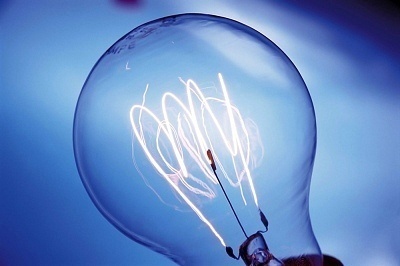The light bulb, invented in 1854, has been a crucial component of civilization since. Contrary to popular belief, the light bulb was invented by Henricg Globel, a German watchmaker, not Thomas Edison. Edison did improve on the idea of the incandescent light bulb, though, and strived to make it better. Due to the works of Globel, Edison, and others, long-lasting light bulbs are now in every room of every house and building. This article will explain the art that went into creating the light bulb by showing various parts of the device.
What Do Light Bulbs Do
Light bulbs work on the principle of exciting electrons within atoms in order to release light photons. This is the case for nearly all sources of light, the only varying factor being how the atom is excited. In the case of an electric light bulb, electricity is used to pass energy on to an atom so that the electrons within it are moved to a higher orbital path around the nucleus for a fraction of a second. When the electron settles back to its original orbital path, light energy is released.
Tungsten Filament
Modern light bulbs are basically the same as the light bulbs created by Thomas Edison. They include a tungsten filament that creates light when electricity is present. This works for nearly all metals but most metals will melt before reaching a high enough temperature to create light. Tungsten was chosen for the light bulb because it has a much higher melting temperature than other metals. The tungsten filament, when stretched out, is over six feet long while only being about one-hundredth of an inch thick. The tungsten is wound into a coil and then that coil is wound into another coil so that the entire six foot filament fits into a space that is usually less than an inch long.
Inert Gas
The incandescent light bulb with its tungsten filament was much better than older sources of artificial light. However, it did have its problems. For instance, the tungsten filament would often break apart one atom at a time due to the extreme temperatures. These tungsten atoms would shoot out towards the glass and build up a dark residue while the rest of the filament would quickly break down. By filling the light bulb with inert arbon gas rather than a pure vacuum, the atoms are forced back towards the filament where it rejoins the rest of the tungsten.
Electrical Foot Contact
All light bulbs include an electrical foot contact at the bottom of the screw thread. This allows electricity to pass into the bulb when connected to an electric circuit. Free-flowing electrons travel into the electrical foot contact, up the support wires that hold up the tungsten filament, and then across the filament itself. This structure of metal and electric pathways is what forms the basic principle of all incandescent light bulbs.
The Future of Artificial Light
Incandescent light bulbs provide a good deal of visible light. However, the majority of the energy released is in the form of heat and infrared light that humans can not see. This means that an enormous amount of electricity is needed to create light that people can actually use. Newer light sources such as LEDs and florescent light bulbs are quickly replacing the incandescent light bulb because they create much more visible light in exchange for less electricity.




timmy
Argon gas* in the inert gas paragraph. May throw some people off